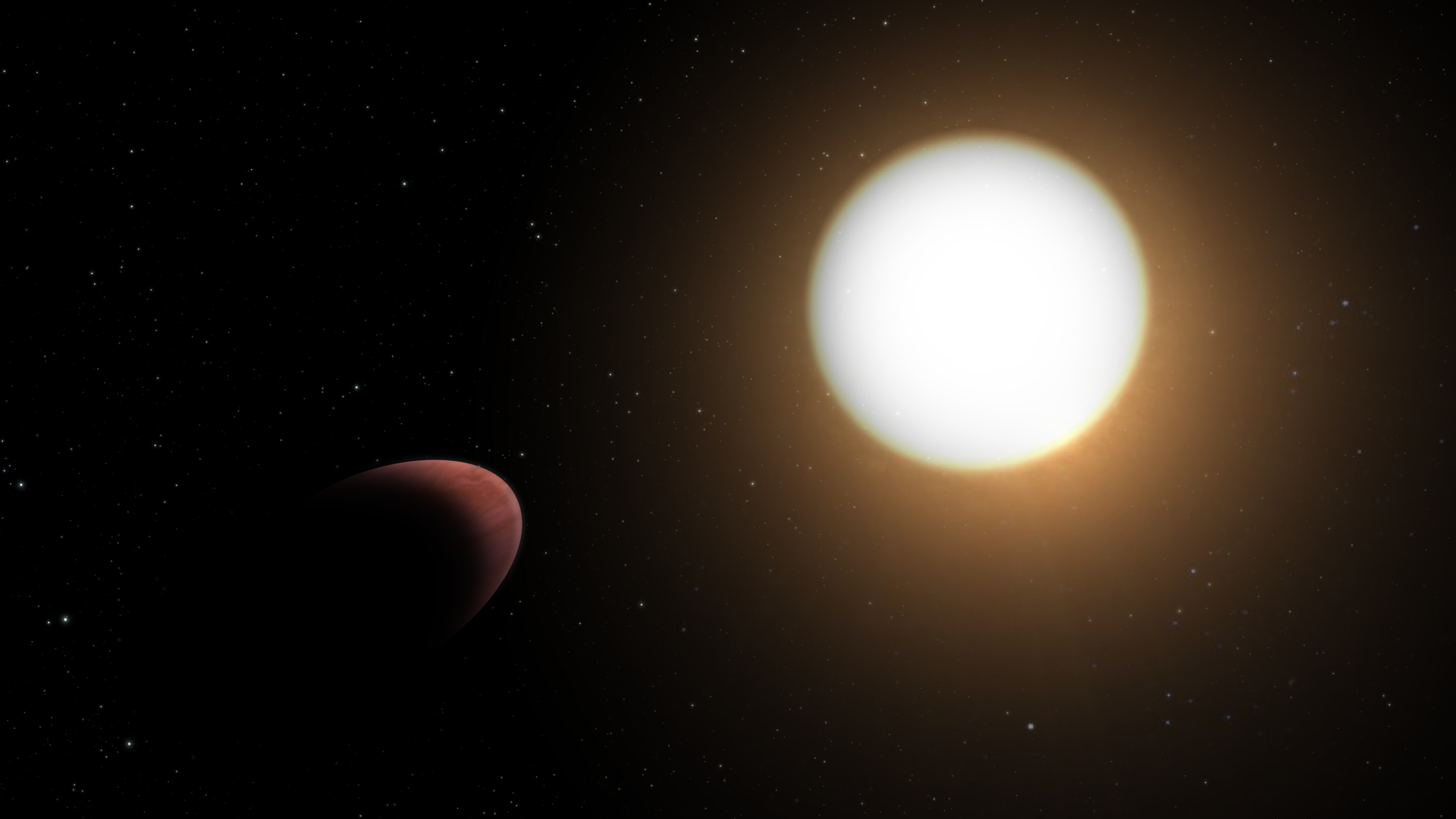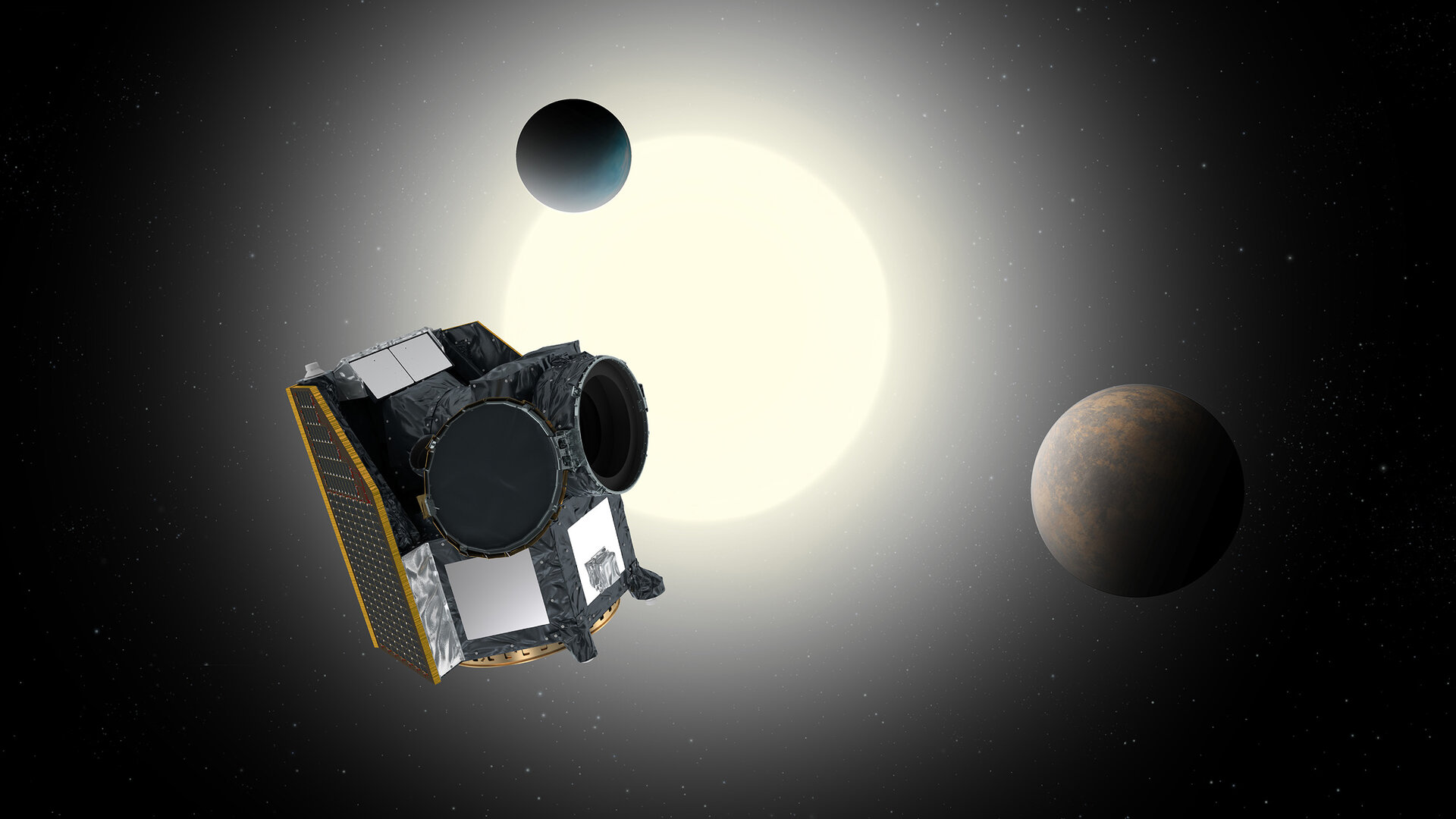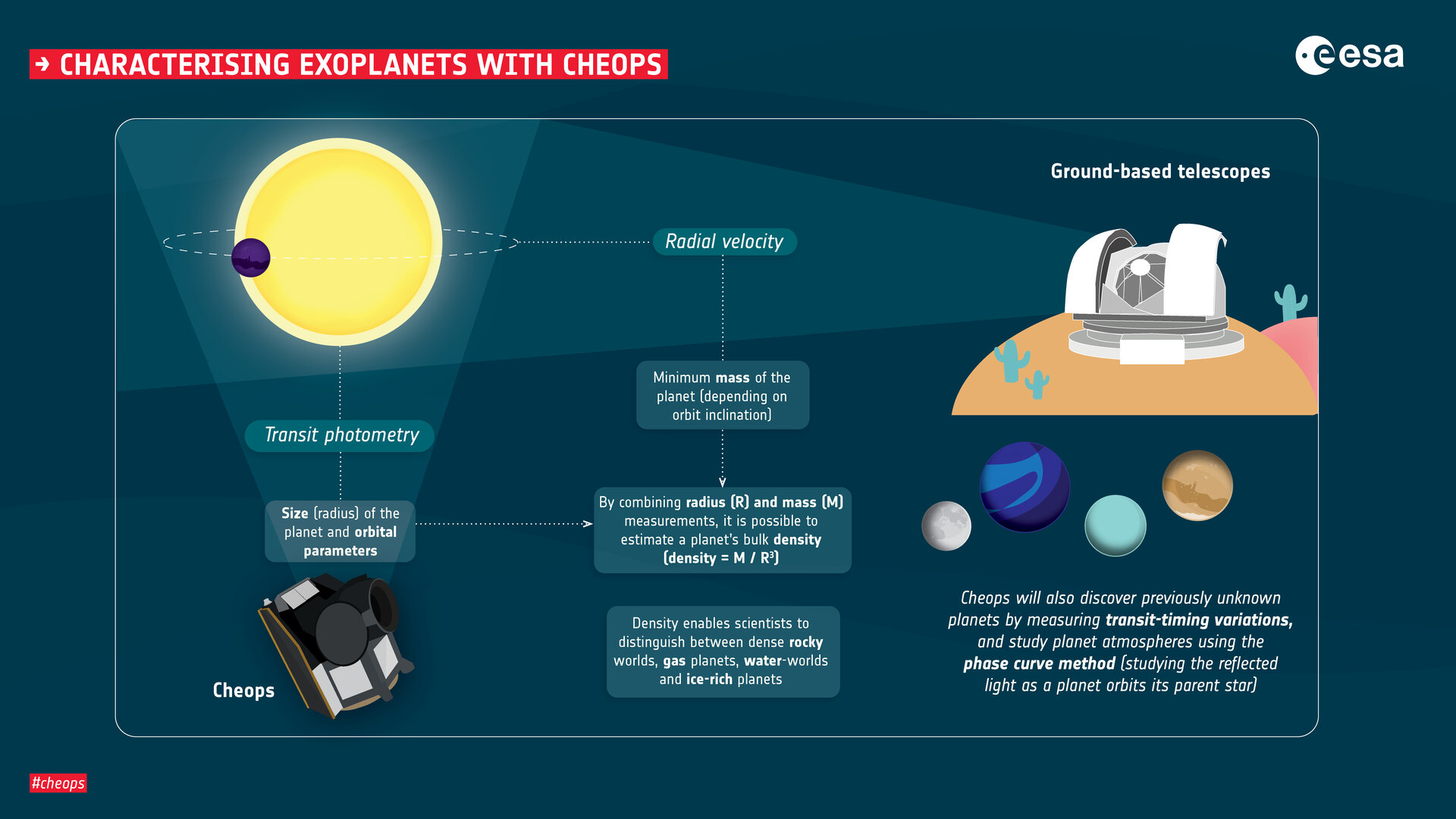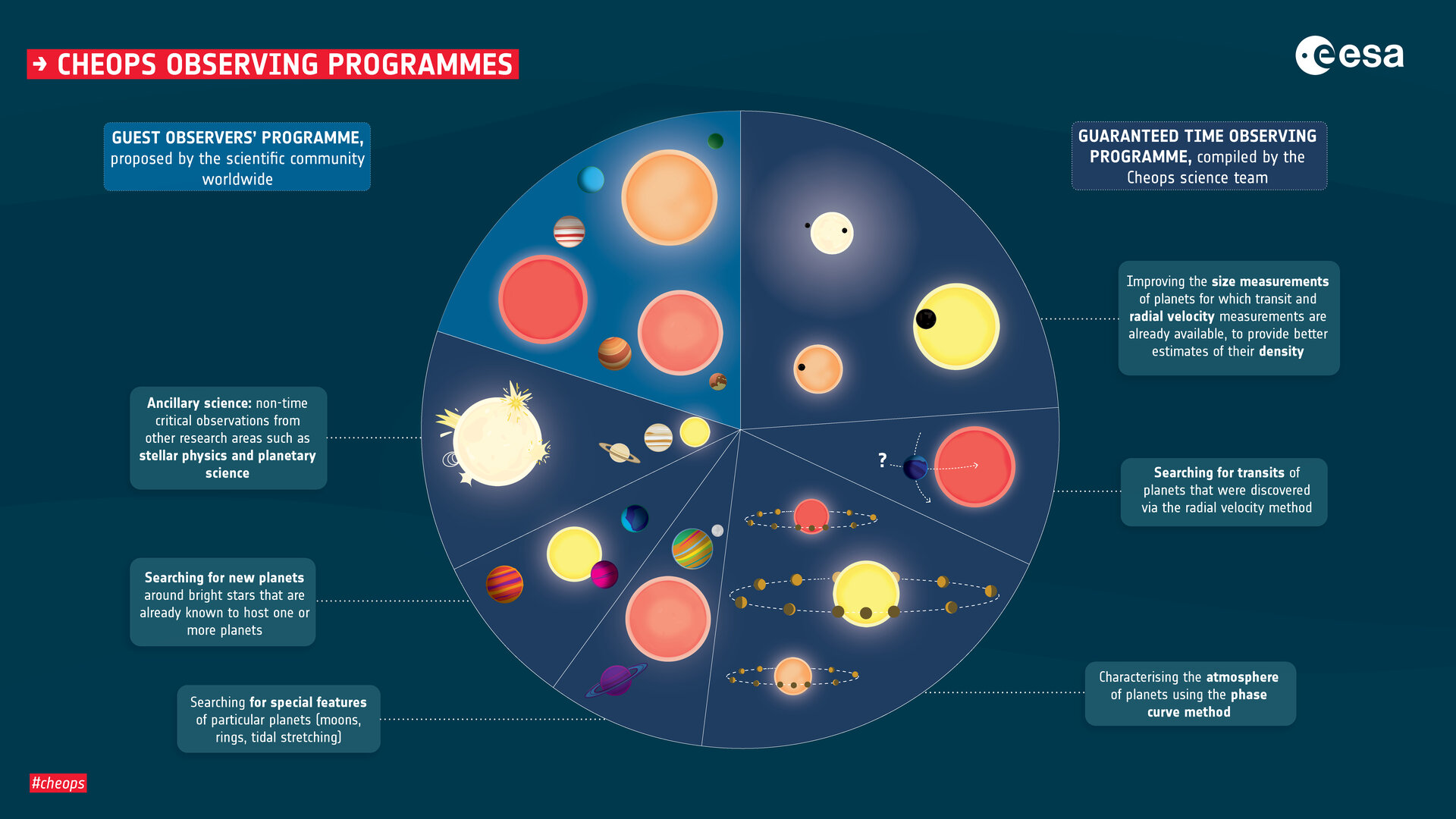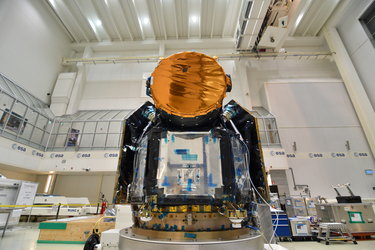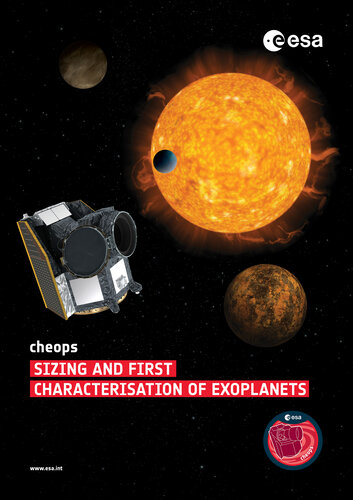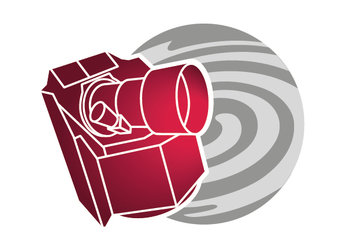Cheops overview
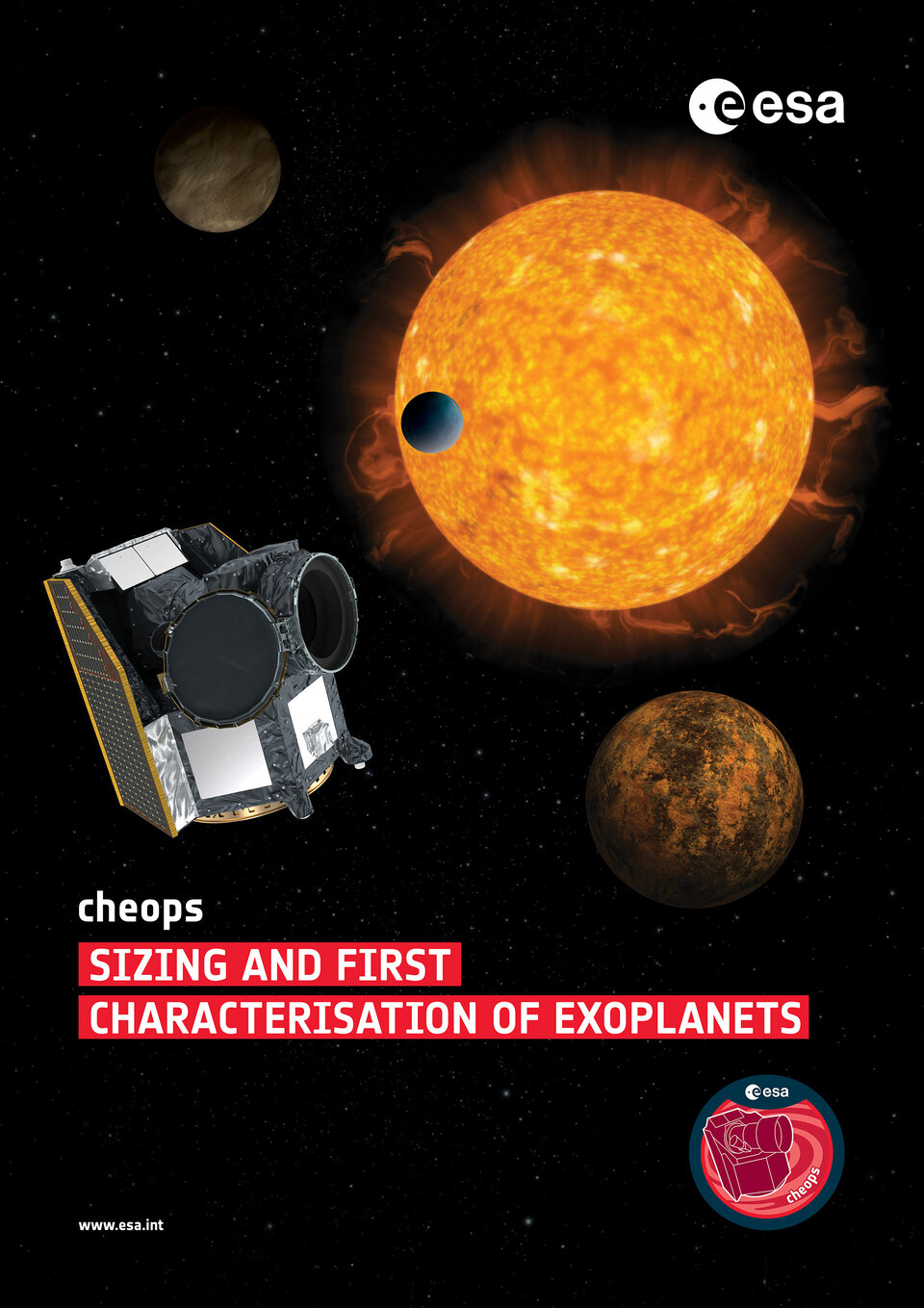
Name: Cheops – CHaracterising ExOPlanet Satellite
Status: In operation. Launched 18 December 2019
Mission: Characterise known transiting exoplanets orbiting bright stars
Objectives: The main science goal of Cheops is to study the structure of exoplanets in the size range of super-Earths to Neptunes that are orbiting bright stars with revolution periods below 50 days. It uses the transit method to determine an accurate size of planets with known mass, enabling the bulk density to be determined. This enables first-step characterisation of the structure of the planet, providing insights into the formation and evolution of planets in this size range.
Spacecraft and instrument: Cheops is a small spacecraft with a launch mass (including propellant) of approximately 280 kg. It has a single instrument: a high precision photometer with a 300 mm effective aperture telescope and a single charge-coupled device (CCD) detector covering visible to near infrared wavelengths.
Orbit: Cheops was a secondary passenger on a Soyuz-Fregat rocket launched from Europe’s Spaceport in Kourou, French Guiana, on 18 December 2019. The launcher delivered Cheops directly to its operational orbit, a Sun-synchronous dusk–dawn orbit 700 km above Earth. This orbit allows the rear of the craft to permanently face the Sun with a minimum number of eclipses, offering a stable thermal environment and keeping stray light to a minimum while the instrument is observing targets in the direction opposite to the Sun.
What's special?
Cheops is the first small (S-class) mission in ESA's science programme, and the first of three dedicated exoplanet missions prepared by ESA. While many previous exoplanet missions focused on discovering new worlds, dedicated space telescopes are now needed to follow up on the ever-growing catalogue and to start characterising these intriguing worlds in order to understand their place in the Universe.
Cheops observes bright, nearby stars that are already known to host exoplanets, focusing particularly on those with Earth to Neptune-sized planets. Previous observations have shown that most Sun-like stars host planets, with a very wide range of sizes, masses and orbital parameters, and that small planets are surprisingly ubiquitous: around half of Sun-like stars host at least one planet of a size between that of Earth and Neptune. The large number of small planets orbiting close to their star was not predicted by planet formation theories and this provides a focus for Cheops.
The unprecedented precision, together with the stability with which the telescope is able to measure the transit depths using the transit method, enables astronomers to determine the planet sizes both accurately and precisely. By knowing when and where to point in order to catch transits, Cheops maximises the time it spends monitoring actual transit events. It points at stars over most of the sky, returning to observe multiple transits over the course of the mission, thus building up the accuracy of measurement of planet sizes.
For a planet for which we already have a mass measurement, combining this with Cheops data makes it possible to determine the density of the planet, giving us clues about its composition and structure. This first-step characterisation of these worlds – many with no Solar System equivalents – is a critical step towards understanding the formation, origin and evolution of these small exoplanets. Cheops does not only follow up on exoplanets discovered by other missions, but it also identifies the best candidates for detailed study by future missions and observatories.

History
Cheops was selected for study as the first S-class mission in Cosmic Vision 2015-2025 on 19 October 2012. The mission was formally adopted in early February 2014 and launched on 18 December 2019.
S-class missions have a much smaller budget than large and medium-class missions, and a much shorter time from project start to finish. These conditions made it necessary to use technologies that had already been tried and tested in space, and a number of tasks traditionally undertaken by ESA, such as operations, are done by the Consortium. Cheops shared the ride into space as a secondary passenger, a choice which drove a number of aspects of the satellite design.
Partnerships
Cheops is a partnership between ESA and Switzerland, with a dedicated Consortium led by the University of Bern, and with important contributions from Austria, Belgium, France, Germany, Hungary, Italy, Portugal, Spain, Sweden, and the United Kingdom.


